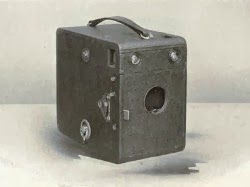Through the film 'The Titanic' and the TV series 'Downton Abbey' we see a lot of social divide between groups of people. Although the groups of people were in close quarters such as living on the same ship and in the same house for months/ years.
This made me think... what caused this issue? why did it change? was there any mixing of classes for any reason? etc.
'January 1910, J.A. Hobson indentified two England's: The North, a producer's England dominated by heavy industry and having a robust working class; The South, a consumer's England dominated by a rentier middle-class with a servile working-class.' - Waites, B A (1976). Journal of Contemporary History. 11th ed. London: Sage Publications. p27-48.
Obviously industry being built created a major divide between classes; The working class work for the Middle class who created the Industrial companies as they have enough money to do this. This is the same now however, back then work policies weren't fully in place - people didnt get compensation for illness/ inguries from work or get enough payment in general to work. This kept the working class within the working class.
However recent studies have shown that within the decade 1910 - 1920 education became a lot more important to people. This meant young people did start breaking out of their working class background by being educated. - 'In 1910-11 there were 639,000 students who attended grant-aided establishments of further education (mainly evening classes/institutions) in England and Wales.' - Waites, B A (1976). Journal of Contemporary History. 11th ed. London: Sage Publications. p27-48.
Looking at other resources i have found that around world war 1 there were changes in poverty - it increased.
there was 60% of working class families (with 3 children and unskilled) below Bowleys poverty line.
http://www.sussex.ac.uk/Units/PRU/wps/wp38.pdf
Not only was their a split between class, there was a split between Genders as well. Women were seen as less important and inferior to men. Women had no right to vote, had to marry into wealthy families to make money rather than earn it themselves and also had to make their husband happy.
WOMENS HISTORY BETWEEN 1910 - 1920
1910 – 1920
1911 British writer, feminist and composer Ethel Smyth composes the
feminist anthem ‘March of the Women’ which is dedicated to Emmeline
Pankhurst. (www.pcsproud.org.uk)
1912 The ‘Cat and Mouse’ Act is enacted in Britain, allowing the government
to temporarily discharge women prisoners hunger striking for the vote –
until they were fit enough to be imprisoned again.
(Greater London Authority (2002) capitalwoman, GLA: London)
1913 A massive rally is held in Hyde Park for women’s right to vote, with
women travelling from all across the country.
(Greater London Authority (2002) capitalwoman, GLA: London)
1915 The first Women’s Institute in Britain is founded in North Wales at
Llanfairpwll. (www.bbc.co.uk)
Thousands of women march in Glasgow in response to the greedy rent
increases faced by women whose husbands were at war. Out of this
came the Rent Restriction Act which changed the housing system and
benefited poor people across the country. (www.gcal.ac.uk)
1916 Mary Barbour founds the Women’s Peace Crusade, an anti-war group
which sought to create links with a range of women concerned about
the war’s effect on families, homes and jobs. (www.gcal.ac.uk)
1918 Women over 30 are granted the right to vote in Britain.
(Greater London Authority (2002) capitalwoman, GLA: London)
The Parliamentary Qualification of Women Act is passed, enabling
women to stand as MP. (www.bbc.co.uk)
Constance Markiewicz becomes the first woman elected to
Westminster, representing Sinn Fein. She became involved in radical
politics through the suffragette and Irish national movement. She is
elected for constituency of Dublin St. Patrick’s as one of 73 Sinn Fein
MPs, but, following the line of Sinn Fein politics, declines the position
while in prison. (www.wikipedia.com)1920s
1920 The Sex Discrimination Removal Act allows women access to the legal
profession and accountancy.
(Greater London Authority (2002) capitalwoman, GLA: London)
http://www.mmu.ac.uk/equality-and-diversity/doc/gender-equality-timeline.pdf
OTHER RESOURCES
Reflection of Research
I decided that if i was going to narrow my research down to being directly about social segregation being shown through films and TV series based in 1910 and 1920 that I should look up some facts about social class within the decade. These facts helped push my research forward as they taught me what went on with social class at that time and how it should be shown in films. Luckily for 'Downton Abbey' and the 'Titanic' they kept the segregation very authentic and real to the actual ways of the decade.
OTHER RESOURCES
Reflection of Research
I decided that if i was going to narrow my research down to being directly about social segregation being shown through films and TV series based in 1910 and 1920 that I should look up some facts about social class within the decade. These facts helped push my research forward as they taught me what went on with social class at that time and how it should be shown in films. Luckily for 'Downton Abbey' and the 'Titanic' they kept the segregation very authentic and real to the actual ways of the decade.















